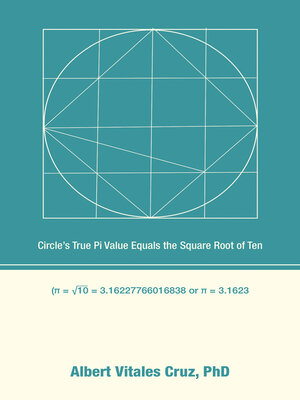
Sign up to save your library
With an OverDrive account, you can save your favorite libraries for at-a-glance information about availability. Find out more about OverDrive accounts.
Find this title in Libby, the library reading app by OverDrive.



Search for a digital library with this title
Title found at these libraries:
| Library Name | Distance |
|---|---|
| Loading... |
The author of this book has discovered an innovative method of determining the True value of Pi ( = 10 = 3.1623 or 3.16227766016838). This new Pi value is derived from the geometric relationships among the circle's components with the use of the Circle Theorem and Pythagorean Theorem. Figure 1 contains an inscribed circle in the square consisting of gridlines equally spaced into one-fourth of the side of the square or the diameter of the inscribed circle. The resulting precise Pi value is validated with the use of the Polygon Area formula, Binomial Theorem, and Quadratic Equation. This contemporary approach to finding the true Pi value reputes the traditional method of finding the Pi value. For the past four centuries, many mathematicians have attempted to find the precise Pi value. It began with measuring the circumference and the diameter of a circle and dividing the former by the latter. The erroneous Pi calculation began during the era of Archimedes of Syracuse circa 287–212 before the Christian era (BCE). Archimedes one of the greatest mathematicians of the ancient world introduced the approximate value of Pi as 3.14 (between 3-1/7 and 3-10/17 bound). Since then, humans have been trying to add more digits to the two-decimal placed Pi in an attempt to find a precise Pi which is still an approximation value.







